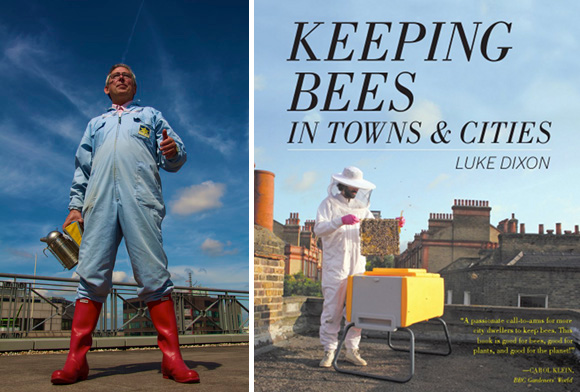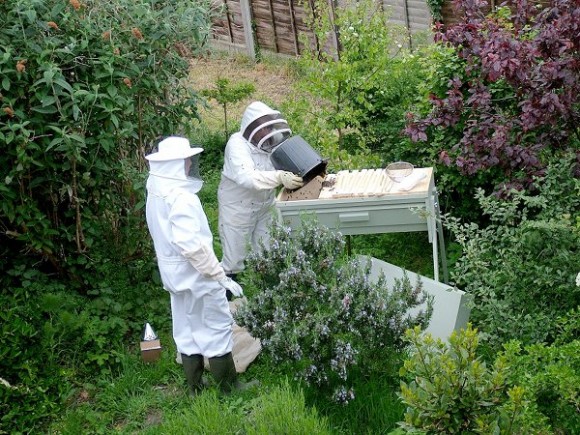Luke Dixon is an apiarist, an apiculturist, a caretaker for bees – I call him a B-man. His new book, Keeping Bees in Towns and Cities, published by Timber Press, is all about urban beekeeping, and not only is it full of helpful advice for urban beekeepers, but there are case studies of beekeepers (including me!) all around the world. Luke is here to share with us a little about what it is like to be in the garden with him.
How would you define your style?
I build little gardens to provide inner-city oases for bee hives. Plenty for the bees to forage on and plenty for the city dweller to look at.
Do you have a garden of your own?
I have over a dozen hive sites in London, and each reflects the limitations and possibilities of its individual location. Many are on rooftops and terraces, where space is restricted, and wind can be a problem.
Do you have any favorite or sentimental plants or flowers?
Buddleia is wonderful for the bees and will grow anywhere, but as my chimney sweep says, they have destroyed more of London than the Luftwaffe did in World War 2. Lavender is always a favourite – the bees love the colour and the smell, as do the office workers nearby.
What is your earliest or favorite gardening-related memory?
Picking cherries from the tree in my parents’ garden.
What are three cardinal design rules that you apply to outdoor projects?
Low maintenance, year-round flowering, highly scented plants.
Luke Recommends…
- The Wildlife Garden at London’s Natural History Museum is an astonishing, magical, secret place.
- Artificial grass (yes, really) to lay under and around bee hives. The bees love it as it retains water and gives them a year-round place to drink.
- Kennington Lodge Apiary’s seed cards. Send a greeting card that can be planted in the soil and from which new plants will spring up.
Thanks Luke! – R
images: Top: Provided by Timber Press, Middle and image of Luke Dixon by Daan Verhoeven and bottom by Liz Turner



+comments+